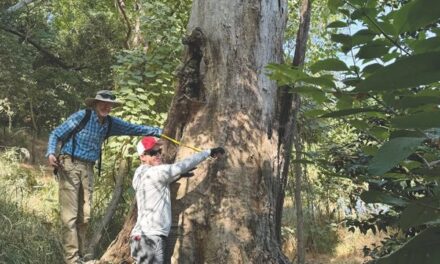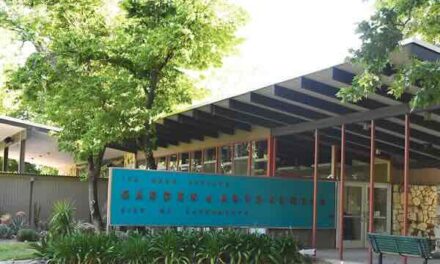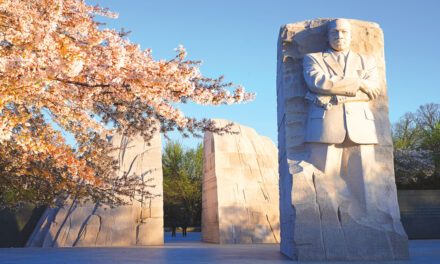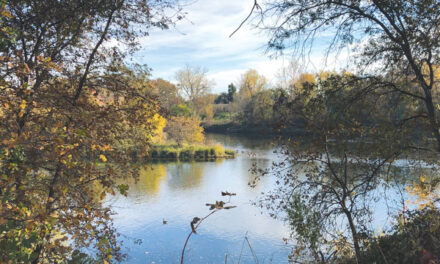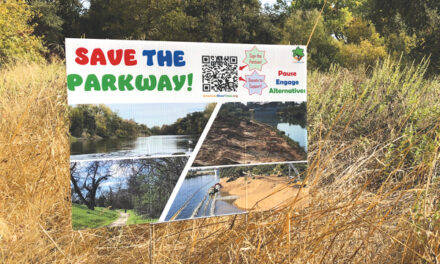Protection, Not Devastation
Army Corps’ one-size-fits-all is wrong for American River
By Cathryn Rakich
January 2025
Living in a city with two major rivers has risks. Half a million Sacramentans don’t want their homes flooded or lives put in danger.
Here’s the catch. We also cherish the river parkway. The lower American River is designated “wild and scenic” for a reason. The forested waterway is a year-round playground for hikers, bikers, boaters and birdwatchers.
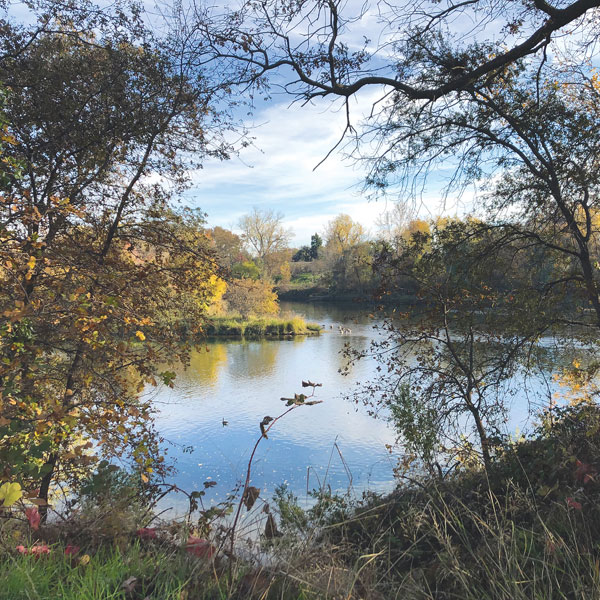
If the U.S. Army Corps of Engineers’ erosion-control work along the lower American River proceeds, hundreds of trees, miles of riparian habitat and countless wildlife will be lost to bulldozers, dredging, rock and rubble.
The project, called Contract 3B, runs from the Howe Avenue bridge to east of Watt Avenue. But does flood protection have to equal devastation?
“We’ve got to prevent the flooding, but let’s do it in a smarter way,” says Pete Spaulding, whose house backs up to the parkway levee.
Spaulding and Alica Eastvold are with American River Trees, a citizens group advocating for a less-destructive approach to flood control. Like Spaulding, Eastvold’s home is steps from the levee.
“Of course we want flood control. My house, Pete’s house, we are going to be the first to wash away,” Eastvold says. “It’s not about shutting something down. We’re not looking for no way. We’re looking for a better way.”
For more than a year, parkway advocates, community organizations and government agencies have called on the Army Corps to redesign Contract 3B. They want a more targeted, less destructive approach using new models and engineering approaches.
They also want more community involvement. Public outreach has been minimal. Three virtual public meetings and a follow-up “community conversation” answered few questions. Requests to walk the parkway with Army Corps engineers have been ignored.
The Environmental Council of Sacramento, which calls the Army Corps’ draft environmental report “flawed,” says an “ineffective public participation process” was used.
Sacramento County’s Department of Regional Parks says the process for involving the public and responsible agencies was “inadequate.”
“It should be all about communication with the public,” Eastvold says.
Parkway advocates with American River Trees include engineers, biologists, environmental scientists and other professionals with relevant expertise.
Spaulding has a degree in civil engineering and knowledge on how river flow, slope, gradient, soil consistency and vegetation affect erosion. Every river is different, and the Army Corps is using a one-size-fits-all approach, he says.
“If the river has a sharp turn, it’s going to be more susceptible to erosion,” Spaulding adds. But the Contract 3B section is straight and doesn’t turn until it reaches Sac State, where previous erosion-control work left the riverbank barren.
Bill Brattain, also with American River Trees, is a licensed civil engineer who worked for the Central Valley Regional Water Quality Control Board for 25 years.
Brattain explains that in 1986 there was a near levee breach downstream from Paradise Beach, where the river is narrow and bends, which increases flow velocity.
County Supervisor Rich Desmond cites the 1986 event in supporting the Army Corps’ work.
Brattain says it’s not accurate to compare 1986 with today. The Contract 3B section “is wider and straighter than the river where the 1986 levee breach nearly occurred.”
Since 1986, Brattain points out the American River levee system has been upgraded. Levees have been raised, widened and strengthened. Seepage berms and 70-foot-deep slurry walls were installed to prevent leakage. Folsom Dam has a new spillway.
“With the upgrades, the levee system along the lower American River is already designed to handle flows that occurred in 1986 and even higher,” Brattain says.
After receiving more than 1,900 comments from the public and local agencies, the Army Corps announced late last year it will delay Contract 3B until 2026. However, the Corps also reports vegetation clearing will begin in fall 2025.
And last November, the Army Corps announced another 50 trees, in addition to the 700 already targeted—including two 300-year-old heritage oaks—are being evaluated for removal.
“We need to redesign this project and make it something we can all live with,” Spaulding says. “Involve the community. Let’s work together on a project we can all be proud of.
“Then we can have erosion protection. We can have flood control. And we can still have an American River Parkway.”
Cathryn Rakich can be reached at crakich@surewest.net. Follow us on Facebook and Instagram: @insidesacramento.





